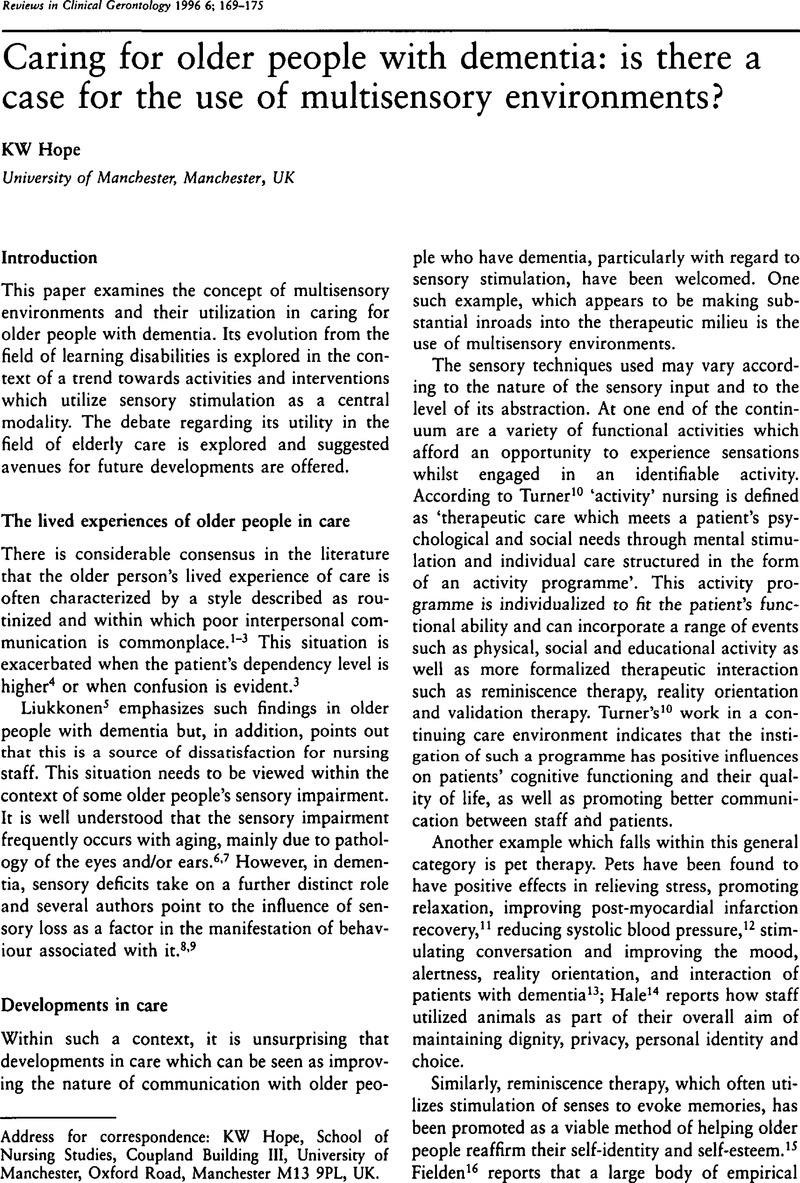Crossref Citations
This article has been cited by the following publications. This list is generated based on data provided by Crossref.
HOPE
1998.
The effects of multisensory environments on older people with dementia.
Journal of Psychiatric and Mental Health Nursing,
Vol. 5,
Issue. 5,
p.
377.
Thurtle, Val
and
Wyatt, Linda
1999.
Multisensory environments and evidence-based practice.
British Journal of Community Nursing,
Vol. 4,
Issue. 9,
p.
440.
Kovach, Christine R.
2000.
Sensoristasis and Imbalance in Persons with Dementia.
Journal of Nursing Scholarship,
Vol. 32,
Issue. 4,
p.
379.
Baillon, Sarah
van Diepen, Erik
and
Prettyman, Richard
2002.
Multi-sensory therapy in psychiatric care.
Advances in Psychiatric Treatment,
Vol. 8,
Issue. 6,
p.
444.
Murray, Laura L
Dickerson, Shantel
Lichtenberger, Barbara
and
Cox, Cari
2003.
Effects of toy stimulation on the cognitive, communicative, and emotional functioning of adults in the middle stages of Alzheimer’s disease.
Journal of Communication Disorders,
Vol. 36,
Issue. 2,
p.
101.
Luijpen, Marijn W.
Scherder, Erik J.A.
Van Sortieren, Eus J.W.
Swaab, Dick F.
and
Sergeant, Joseph A.
2003.
Non-Pharmacological Interventions in Cognitively Impaired and Demented Patients - A Comparison with Cholinesterase Inhibitors.
Reviews in the Neurosciences,
Vol. 14,
Issue. 4,
Kovach, Christine R.
Taneli, Yavuz
Dohearty, Paul
Schlidt, Andrea Matovina
Cashin, Susan
and
Silva-Smith, Amy L.
2004.
Effect of the BACE Intervention on Agitation of People With Dementia.
The Gerontologist,
Vol. 44,
Issue. 6,
p.
797.



